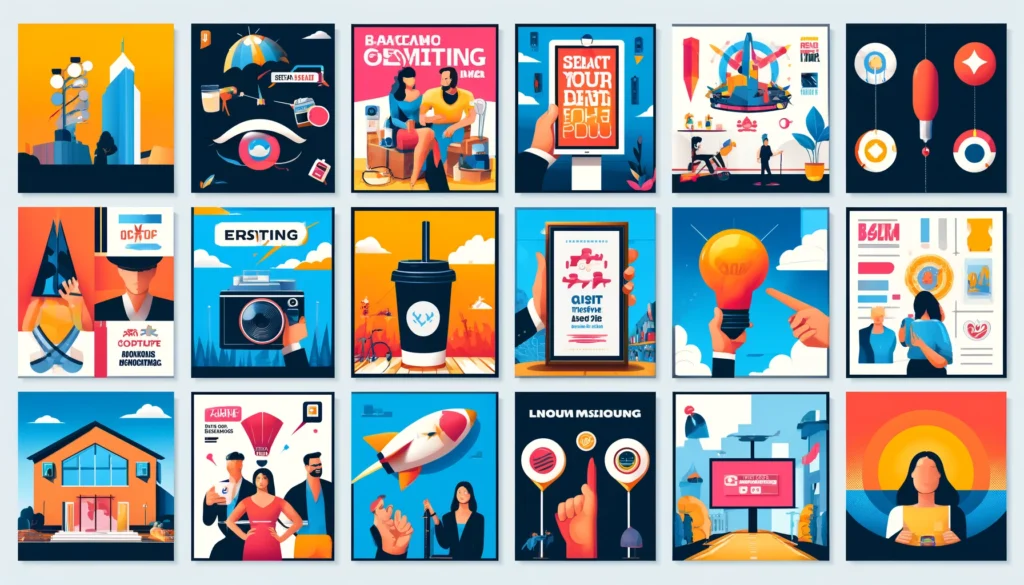Brand platform: we tell you everything! No-one can hide behind their little finger any longer. Today, more than ever, it’s essential to look after your brand!
This is imperative for 2 reasons:
1- A strong, solid brand becomes your sales arm at a time when sales forces are finding it increasingly difficult to reach over-solicited targets.
2- Whether in B2C or B2B, it’s impossible to ignore consumers’ new expectations in terms of brand experience, authenticity, CSR, etc.
But before this facelift, which is supposed to make your company sexy and attractive, you need to think about your brand, its raison d’être and its positioning.
This involves a great deal of in-depth work and soul-searching. This is where the brand platform comes in, as a tool to help you design your identity.
In this article, we’re going to help you see things more clearly, and go through the different stages involved in creating your brand platform.

What is a brand platform?
Simply put, a brand platform is the foundation of your message and your communication.
It embodies your brand, its values, its promise, its offering, its history, its vision, etc. It’s the platform that highlights your differentiating features to win over your targets.
In general, the final deliverable of the brand platform is your brand manifesto, the brandbook.
The brandbook is quite simply the bible of your brand image and marketing strategy.
It is this brandbook that will enable all your employees to be aligned with the company’s strategic vision and ensure that everything you say is consistent with your brand image.
Thanks to this work, which sets your identity in stone, you take control of the image you want to project to your customers. Because it is on the basis of the brandbook that you will build or redesign your website, your sales presentations, your digital campaigns, your job offers, etc.

The fundamentals of the brand platform
Building your brand platform is a stylistic exercise that involves clarifying your brand identity in order to create value. This work must be aligned with new consumer expectations and codes. It is therefore essential to avoid false promises and to respect what we, as consumers, business partners and candidates, expect of a brand today.
A brand with personality:
You have to assume thata brand is like a human being. Do you prefer bland people to people with a strong character? The answer is certainly no…
At Brandy Sound, we love this phrase: “A good brand identity is one that stands out and is noticed”.
Describe your brand as a person, tell us how it is unique, different and what its character traits are. Whether your brand is funny, quirky or rather serious, it’s important to be in tune with all your stakeholders. At this stage, it’s a question of making a long-term commitment by embracing what sets you apart from the rest – you don’t change your personality overnight!
“A good brand identity is one that stands out and is noticed”.
Olivier Saguez – Saguez & Partners
An authentic brand
We’re warning you right away that this is a big job, and you’ll certainly need the support of storytelling professionals. Obviously, bullshit is out of the question, and you need to find the right tone of voice to talk sincerely about your brand and its raison d’être. So beware of fine promises, because what counts above all are actions…
An inspiring brand
The success of your brand will depend on its ability to project an inspiring future. What is your contribution to the world, to the future, to humanity?
It’s no longer enough to say that the world is changing, you have to be part of that change. This means engaging your audience (employees, customers, prospects, applicants, etc.) and explaining how your brand is useful.

Steps to creating your brand platform
Because having a methodology and sticking to it is the key!
1. Information gathering
This stage consists of gathering all the information you have about your brand. There’s bound to be a lot of information scattered throughout the company: sales, communications, HR, etc.
The aim is to get an overview of everything your brand has said since it was created. This exercise will enable you to prioritise the elements of your discourse that are part of your brand DNA and to set aside those that seem out of step with what you want to express tomorrow.
2. Analysis
Building a brand platform is based on concrete data from your brand ecosystem:
- Your brand DNA: who you are, your mission, your history, your values, your organisation, etc.
- Your offering: your products and services, your added value, your distribution channel, etc.
- Your targets: your markets, personas, customer paths
- Your competitive environment: who they are, what differentiates them…
- Your communication: your strategy, technological resources, channels used, tone of voice, etc.
3. Defining the basis of your platform
With a new perspective on your brand and its ecosystem, you are now ready to lay the foundations of your brand platform:
- Vision : This is how your brand sees the world and its future. It’s an inspirational statement that guides your long-term actions and aspirations.
- Mission: Your brand’s mission defines its role and impact in society. It specifies the concrete actions your company undertakes to achieve its vision and serve its community.
- Its values: Your brand’s core values are the ethical principles and beliefs that guide it. They represent what your brand stands for and the standards it strives to meet in all its interactions.
- Its targets: It’s essential to clearly identify the people your brand is aimed at. Understanding your target audiences allows you to better meet their needs and develop meaningful relationships with them.
- Its promise: Your brand’s promise is the commitment it makes to its audiences. It is the guarantee of the value and experience your brand offers, creating customer trust and loyalty.
- Personality: Your brand’s personality is reflected in the way it expresses itself and behaves. It reflects the distinctive traits that make it unique and memorable for its audiences.
4. Final stage: formalisation
Now it’s time to put the brandbook into shape. Through the expert use of storytelling, every element of the brand’s communication is meticulously described down to the smallest detail. Every word is carefully chosen so that the story accurately reflects the very essence of your brand.
Shared internally, the brandbook becomes the instruction manual for your brand’s communication.
It enables your teams to update all the communication media that ensure the consistency of your brand, both internally and externally.
Your brand platform thus becomes the foundation on which you can build communication and engagement strategies that reinforce your brand’s identity and impact in the marketplace.
Sound identity at the heart of the brand platform
We couldn’t end this article without mentioning that sound identity is an essential component of the brand platform. In today’s digital world, brands need to be heard as well as seen.
So it’s vital to think about your brand’s sound charter just as much as its graphic charter, and to detail them in your brandbook.
Read also: How to integrate audio into your marketing plan

Are you thinking about your brand identity? Let’s talk about it together with the agency that’s working with you! At Brandy Sound, we create sound identities and compose music for brands to make them memorable and iconic.
